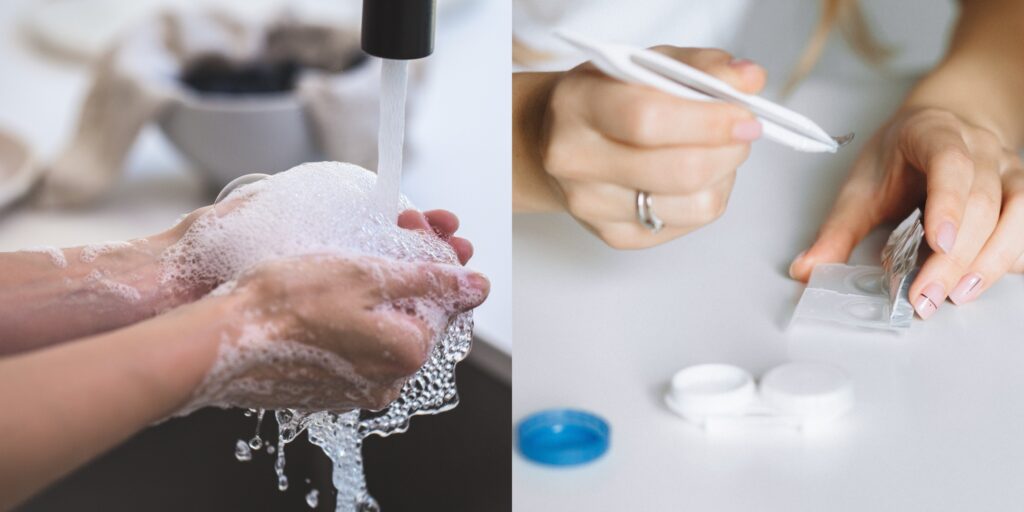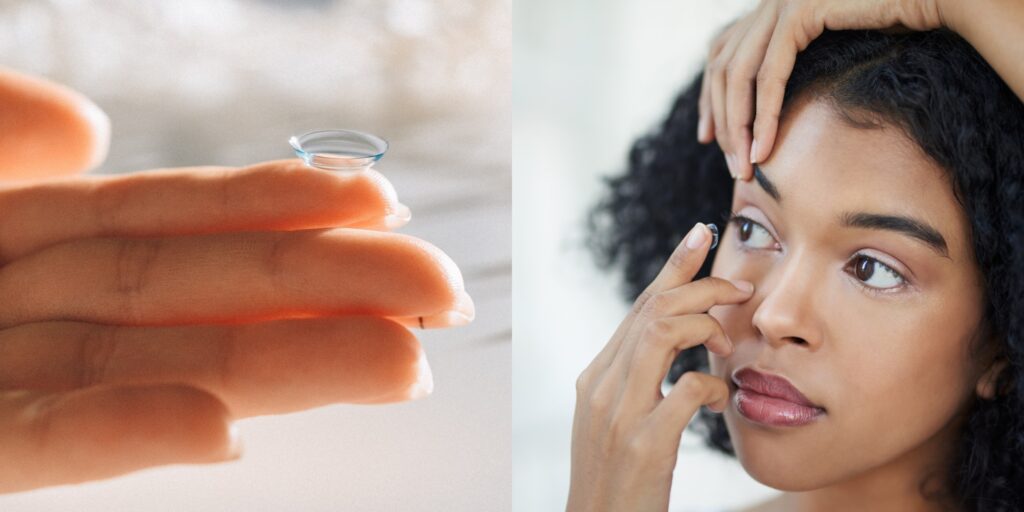All You Need to Know About Contact Lenses
Contact lenses have evolved from a time when people used to feel unsafe to use contact lenses over spectacles to a time when a large number of people have switched to contact lenses. On one hand contact lenses provide a better peripheral vision, and on the other hand it cosmetically looks better.
While contact lenses have provided a better scope to sportspersons, people indulged in acting industry, and people with moderate to high refractive errors, it is important to follow proper steps when you opt contact lenses. From a professional advice by a practicing optometrist to daily care each and everything will make a difference in your life with contact lenses.
Here are top points which you need to keep in mind while opting contact lenses:
To know whether the contact lenses are appropriate or not:
Contact lenses are not like brown bread which you choose over white bread and just go and buy. Eye is one of the most sensitive parts of the body. Each careless step counts and adds up to ruin your vision. When you choose contact lenses it is important for your optometrist to look and thoroughly examine the below mentioned points:
- History
- Medical conditions
- Refractive error
- Expectations and responsibility
History:
It is important to look back on the history of the patient. Whether the patient has used contact lenses in past remains an important point. The consulted optometrist should be conveyed the reasons behind each possibility- If the patient has used CL in the past and then discontinued or if the patient has not used CL ever in life.
Medical conditions:
Medical conditions remain an important parameter while opting for contact lenses. To look on the medical conditions of the patient for CL is not about prescribing the whole-body MRI scan, but to consider general health conditions. These include:
- Allergies: It is important to consider if your body is allergic to any food or condition. People prone to allergies are more susceptible to adverse reactions by using CL.
- Diabetes: To keep in mind the blood sugar levels is important while opting for CL. In moderate or extreme instances of diabetes, there is occasionally corneal hypoesthesia, prompting a more prominent inclination for corneal erosion and disease.
- Pregnancy and Menopause: Women should avoid the use of CL during pregnancy or menopause. Pregnant women with water retention show an intolerance to contact lenses. Women during menopause often show changes in the lacrimal tear both in quality and quantity which is not a good condition to use CL.
- Chronic Respiratory Disease: People with chronic respiratory diseases like asthma, sinusitis etc. should not opt for CL.
Refractive Error:
Refractive error is when the shape of your eye does not bend light rightly which results in blurred vision. The most common types of refractive errors are- myopia, hyperopia, and astigmatism. Myopia also known as nearsightedness is when nearby objects are clear and distant objects are blurry. Myopia is often genetic and progresses over the teenage when the body is in its growing stage. Hyperopia also known as farsightedness is when the far objects are clear and close ones are blurry. Astigmatism is when the lens of your eye is curved differently. Astigmatism is generally inborn or may be caused by some injury
An age-related condition: Presbyopia is when the lens ages with time. After 40 years of age the lens becomes more rigid. Presbyopia often combines with myopia, hyperopia or astigmatism.
It is important to take into account the refractive error before opting CL. People with low refractive errors are not good candidates for contact lenses than those having moderate to high refractive error.
Expectations and Responsibilities:
It is important to act responsibly while you are using contact lenses. Contact lenses have expiration dates like 3 months or one year and the patient opting for contact lenses should be responsible enough to dispose it according to its expiry date. While you are using CL, you should maintain personal hygiene and if in case your lenses are not clean or have scratches then you should dispose them immediately.
Contact lenses over spectacles:
There are a lot of reasons for opting contact lenses over spectacles like
Cosmetic purposes: A lot of people find spectacles cosmetically unsound and feel demotivated to use spectacles outside their homes. For such people CL remains good choice.
Not satisfied/ uncomfortable with spectacles: Some people find spectacles uncomfortable and for them CL remains a better choice.
Improved vision with contact lenses: Vision is not hampered with the contact lenses as they provide better field of view than spectacles and do not cause problems like glare and photophobia.
Side view is not restricted: Contact lenses provide better peripheral vision compared to spectacles which restrict it.
Occupation: Contact lensesarea good choice for people who are into acting industry, and also for people engaged in such jobs which require better peripheral vision.
Sports: Contactlensesare always a good choice for sports persons. Spectacles often limit your performance in sports activities and in such situations contact lenses provide improved vision with peripheral vision.
Contact lenses are not a good choice in:
On one hand contact lenses remain a good choice for certain categories of people, on the other contact lenses with prove a bad choice for
- Dry eye patients
- Diabetic patients (if needed, follow up is must)
- Allergy (first symptoms should be treated & follow up is must)
- Demotivated patients
- Pregnancy and menopause
- Poor personal hygiene (dirty hands and nails)
- Inability of the patients to follow instructions of cleaning and storage of contact lenses
- Very old and very young patients who can’t manage the insertion and removal of contact lenses with care and maintenance
How to insert contact lens:
It is always important to insert the contact lenses with clean hands so, wash and dry your hands with a lint free towel first, then put the lens on the tip of your index finger, look into the mirror while inserting the lens. Then use your middle finger to pull your lower eyelid and use your other hand to hold the upper eyelid. Do not look onto the contact lens, instead look at a distant target in mirror or look down. Then insert the contact lens and look down, gently leave the upper eyelid first not the lower eyelid. Blink to adjust.


One opting the contact lens should be responsible to follow:
- Medical instructions given
- Contact lens wearing time
- Contact lens maintenance
- Understanding the signs and symptoms of contact lens related problems
- Understanding of when prompt assistance must be obtained.


